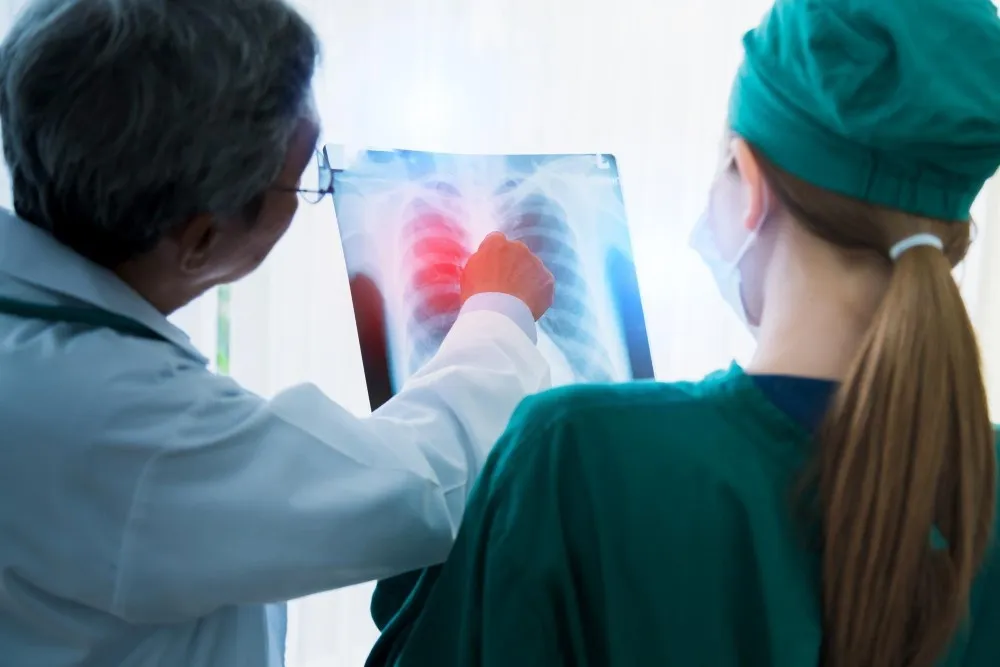The goal of early breast cancer detection is to find cancer before it becomes symptomatic.
Breast cancers that are detected once the symptoms begin to show tend to be larger and often have already spread to other tissues beyond the breast. In contrast, breast cancers that are identified as part of screening exams, diagnostic and monitoring tests are more likely to be smaller and confined to the breast tissue.
The size of the breast cancer and its extent of spread are important considerations when charting the prognosis of the disease. Diagnosis of breast cancer at an early stage greatly increases the chances of successful treatment and restriction of proliferation to other tissues. Any abnormality in the breast should be thoroughly examined by the doctor and explored further with the help of diagnostic tests.
An early detection test for breast cancer saves lives by allowing healthcare providers to initiate treatment much earlier than otherwise might have occurred.
Diagnostic Tests
Breast Self Examination
Women more than 20 years of age must perform breast self-exam every month to be familiar with the normal look and feel of their breasts, and be able to seek medical help in case of abnormal changes. Ideally, breast examination should be done after the menstruation cycle.
Clinical Breast Examination
A clinical breast exam is performed by a healthcare professional and should form part of your regular health check up every three years starting at the age of 20, and every year starting at the age 40. More frequent clinical exam may be recommended to you if you have a strong history of breast cancer in your family.
Mammogram
a mammogram is an X-ray that helps a specialist to look the breast tissue for the presence of Breast Cancer. A small dose of radiation produces an image of breast tissue, and will show lumps/specs/microcalcifications. Further tests are required to confirm presence of cancer cells.
Breast ultrasound
Specialists use penetrating sound waves and their deflection to create a computerised image of internal breast tissue. A breast ultrasound can differentially show a lump of solid mass, a cyst filled with fluid, or a combination of both. While cysts are mostly non-cancerous, a solid lump may indicate cancerous tumour. Breast ultrasound measures the exact size and location of the lump and the condition of its surrounding tissue.
Breast magnetic resonance imaging (MRI)
A breast MRI provides a more conclusive evidence and assessment of the extent of cancer spread. Images generated by the transmission of magnetic energy and radio waves helps medical professionals to distinguish between a normal and tumorous breast tissue.
Biopsy
A biopsy test involves removal of some tissue and fluid from the suspected area with the help of a small needle, examination under a microscope and other tests for presence of cancerous tissue. A biopsy report will provide a complete picture of your situation that includes benign or non-cancerous cells in the lump, histological type and details of the tumor, and receptor status of tumor. After Breast Cancer is diagnosed, the treatment modality is decided based on the histological type, age, receptor status and stage of the disease.
Multi-modality Treatment of Breast Cancer
Broadly there are 3 treatment modalities of Breast Cancer Treatment.
- Surgery
- Chemotherapy/Targeted Therapy/Hormonal Therapy
- Radiation Therapy
Breast Cancer is curable if detected at early stage. Be aware and watchful of the early signs of breast cancer and visit your breast cancer specialist at the earliest for best treatment results.
Join our Cancer group for regular updates.
List of Best Cancer Doctors across India
Best Oncologist in Delhi NCR | Best Oncologist in Mumbai Region | Best Oncologist in Kolkata | Best Oncologist in Hyderabad | Best Oncologist in Chennai |

Reviewed by







